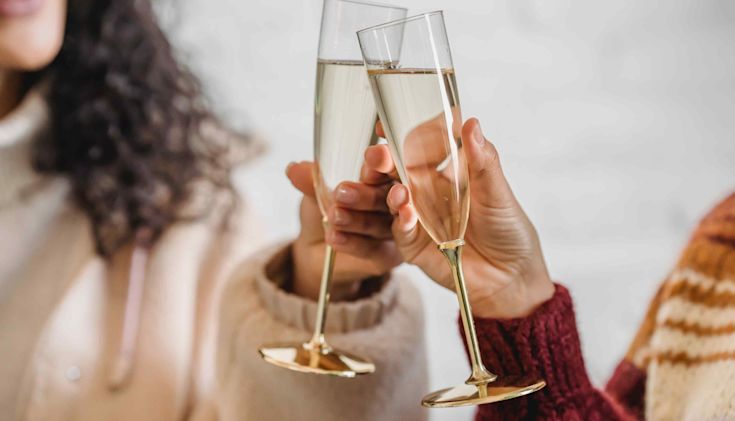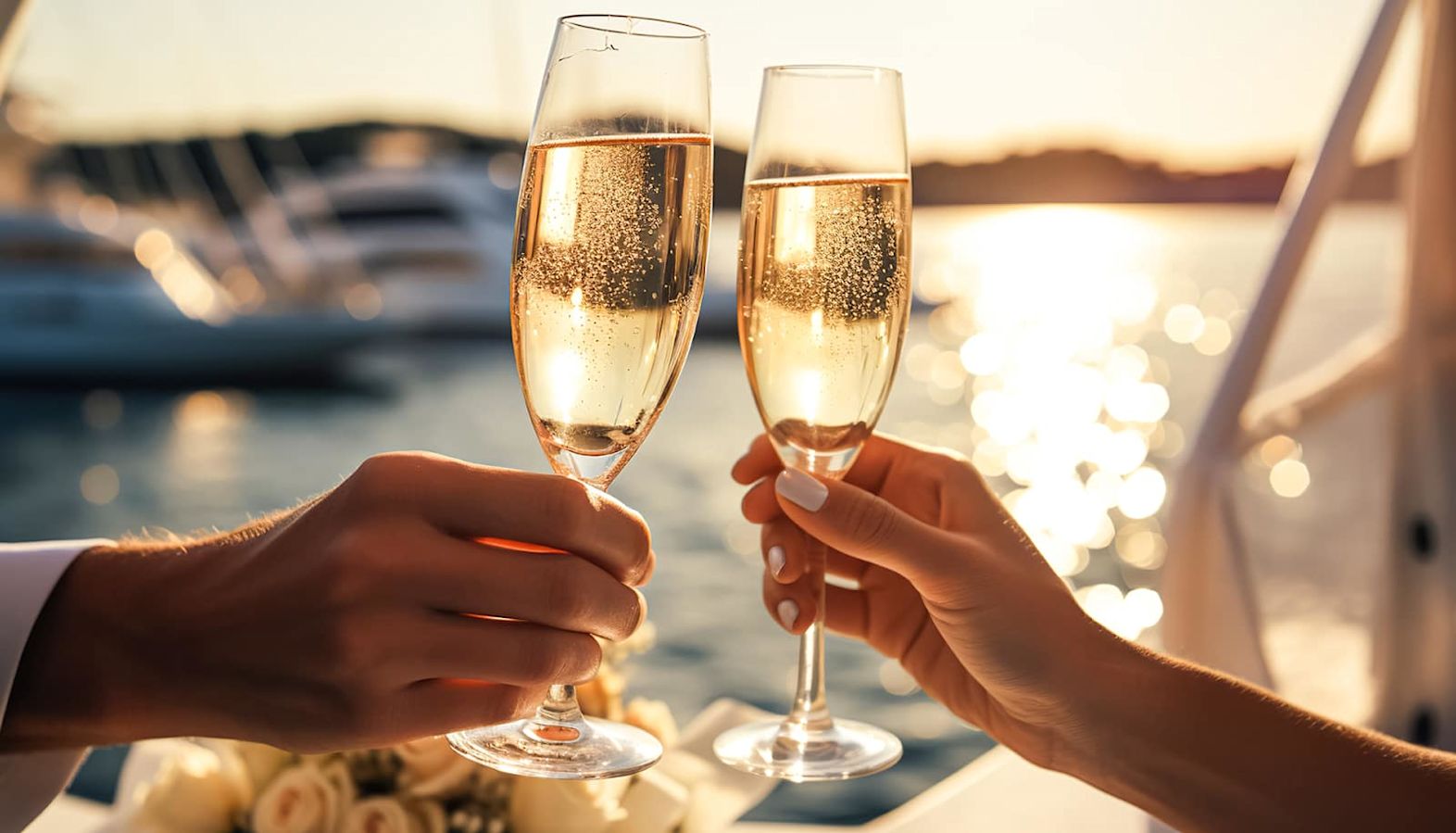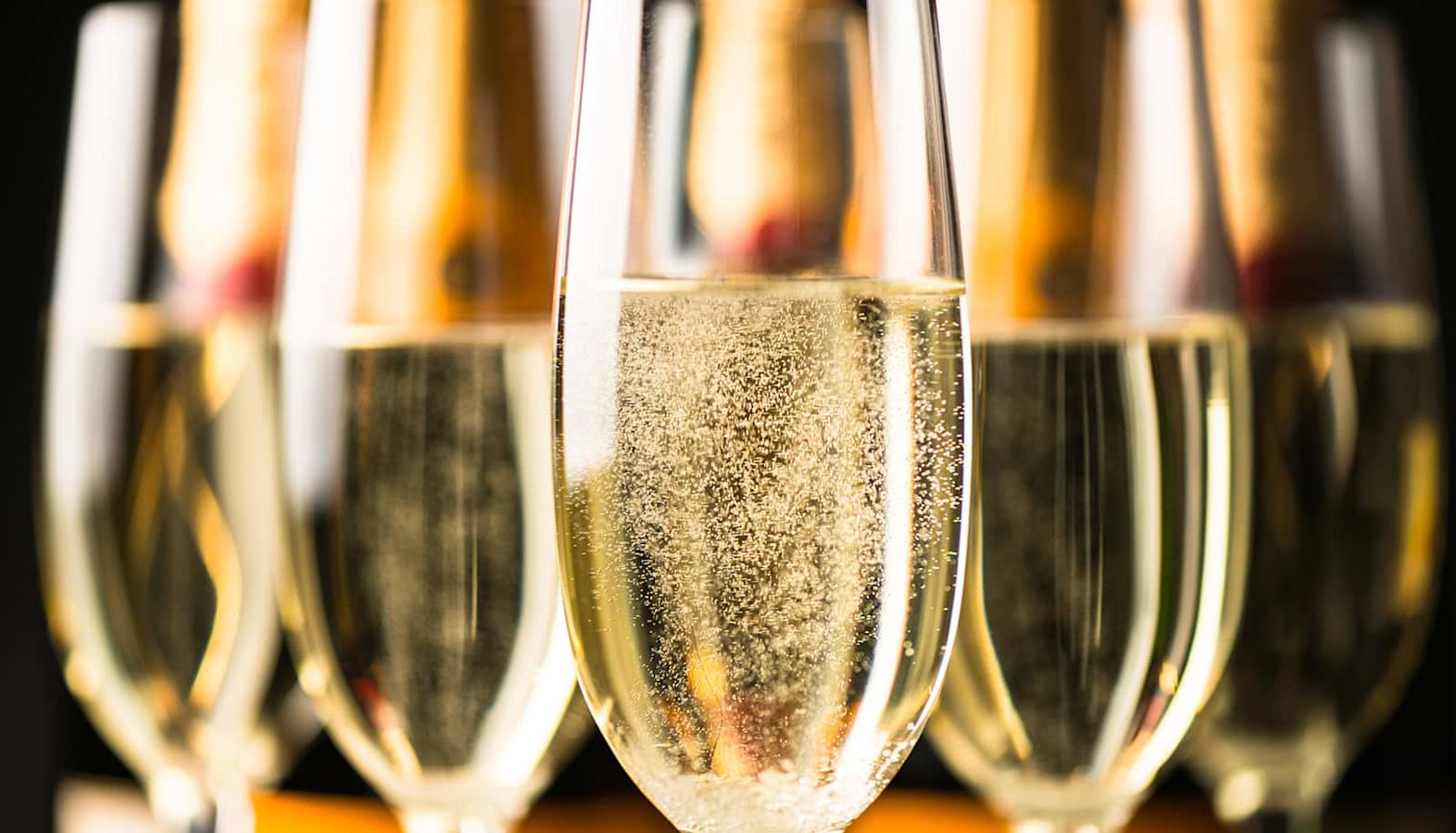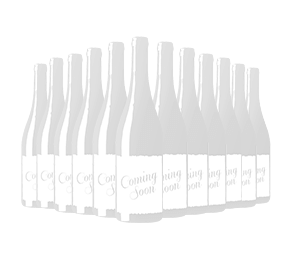Chat with Vinny
Want to know how long a bottle of Champagne will keep after it’s opened? Or perhaps you’re wondering how long you can keep that special bottle in your cellar to enjoy at its best? Read on to find out.
The facts at a glance
Here’s the speedy answer to how long your Champagne will last:
Non-vintage Champagne Three to four years
Vintage Champagne Five to ten years
Blanc de Blancs As above but a little longer
An opened bottle Three to five days in the fridge

Nobody wants to see Champagne go to waste. But what can you do with an unfinished bottle at the end of an evening? (Yes, we know, you could always drink it!) But will it keep until the next day? And will it still have those lovely fine bubbles?
Or perhaps you’re planning to treat yourself to a few bottles of Champagne (or you have been lucky enough to receive a case as a gift) you might be wondering how long they’ll keep.
The answer might not be what you expect. Read on to discover how long an opened or unopened bottle of Champagne will keep its sparkle – and how to store it for best results.
How long does Champagne last once opened?
OK, here’s the short answer.
Once opened, a bottle of Champagne can keep its bubbles for three to five days.
That might seem a long time. But because of the way Champagne is made (see below) its bubbles are very well integrated into the wine. That’s why Champagne bubbles are so fine and consistent compared to some other sparkling wines.
So – if you fancy a glass or two of Champagne, but you’re worried about wasting the rest of the bottle – relax. It’ll easily keep for a few days in the fridge.
What is Champagne?
Who doesn’t love a glass of Champagne? Streams of fine, persistent bubbles, aromas of freshly baked bread, refreshing apple and citrus fruit … sheer bliss. It’s considered a must-have at any celebration, but that doesn’t mean you can’t enjoy a chilled glass as a treat. It makes a delicious pick-me-up and works wonders with all kinds of food.
By definition, Champagne is a sparkling wine from the Champagne region in France. It comes in many types and styles and can range in price from as little as £20 a bottle to tens of thousands. But one thing all Champagnes have in common is that they must be made by the Méthode Champenoise. And that has a BIG effect on how long they last once opened.
Champagnes can be made from seven different grape varieties, but most use just three. Two are red – Pinot Noir and Pinot Meunier. The other is white – Chardonnay.
It’s worth noting that Champagnes made with Chardonnay can last longer and will benefit most from ageing. So, a Blanc de Blancs (made purely with Chardonnay) will last the longest.

How does Champagne get its bubbles?
Technical content alert!
All Champagne is made by the Méthode Champenoise – sometimes known as the Traditional Method. To begin with, it is fermented like any other wine. But here’s the clever bit. A small amount of sugar is added during the bottling process and the wine is then sealed with a temporary crown cap (the kind you find on a beer bottle).
This causes a secondary fermentation to occur. But because the Champagne is now in a sealed bottle, the carbon dioxide produced during fermentation has nowhere to go. So, it stays in the liquid – ready to be released in fine streams of bubbles once the wine is opened.
Thirsty yet? Find our range of Champagnes here.

What factors affect how long champagne lasts?
There are two main things that affect how long Champagne lasts in the cellar.
Whether your Champagne is Vintage or Non-vintage (NV).
What grape varieties it is made from.
What are Vintage and Non-vintage Champagnes?
Vintage Champagnes are made with grapes from a single year (though they may come from different vineyards). NV Champagnes are made with grapes from different years and often include ‘reserve wines’. Reserve wines are older wines, kept in tank, and used to add some mature complexity to the NV Champagnes.
Vintage Champagnes must be kept for at least three years in the cellar before release. They will already have more complex flavours and aromas than most NV Champagnes. And, as a rule, Vintage Champagnes can be kept for longer, too.
Non-vintage Champagnes often already have an aged component (from the Reserve wines) and are usually drunk soon after release.
So how long does unopened Champagne last in the cellar?
The short answer is:
Vintage Champagne: can last for five to ten years if properly stored. It can even keep for up to 15 years if you prefer a more evolved style.
Non-vintage Champagne: can last for three to four years if properly stored. However, some famous NV Champagnes (Krug Grande Cuvee for example) can last much longer.
Blanc de Blancs: Champagnes made purely from Chardonnay – whether Vintage of NV – tend to last a little longer than other styles and benefit more from ageing.
Fancy a drop? Find our range of Champagnes here.

What is the best way to store Champagne?
Follow these rules for storing your Champagne in optimum conditions.
Keep your bottles cool and away from light. Try to keep your bottles between 7°C and 10°C and away from direct sunlight. A dark cellar is ideal.
Keep them at a steady temperature. This is even more important than keeping your bottles cool. Make sure they are not exposed to wide fluctuations in temperature.
Keep them lying down. This will prevent the cork from drying out and keep your Champagne well-sealed and oxygen-free.
Don’t disturb them. Keep them somewhere where they won’t get bumped or rattled – they’ll mature more slowly if left in peace.
Store upright before opening. Stand them upright a few weeks before you plan to open them. Vintage Champagnes may develop a little sediment and you want this to be at the bottom of the bottle when you come to serve it.
What is the best way to store opened Champagne?
Storing an opened bottle of Champagne is thankfully very simple. You just need to do two things:
Keep it in the fridge. Storing opened Champagne in the fridge does more than just keep it at serving temperature. Because the liquid is cooler, it is more inert. Remember physics from school? Gases expand when they get warmer. So keep your Champagne cool and it will stay fizzy for longer.
Pop a stopper in. A Champagne stopper will help keep those bubbles in for longer, too. If you don’t have one, a spare wine cork will do just as well.
How long do other sparkling wines keep their bubbles?
Tech alert part two!
As we’ve seen, Champagne keeps so well because of the way it’s made. But not all sparkling wines get their bubbles in the same way. In fact, most quality bubblies are made in one of two ways: Méthode Champenoise (Traditional method) or Charmat (Tank Method).
Tank method is similar to the traditional method except … you guessed it. The secondary fermentation takes place in a tank. The most famous example of this is Prosecco.
One result of using the tank method is that you get fewer of the complex secondary flavours associated with Champagne. This is a good thing for some wines (like Prosecco) where you want the wine’s natural fruity flavours to shine through.
But the tank method also produces larger bubbles – and they won’t last quite as long once the wine is opened. Don’t worry though. Tank-method wines can still keep for a few days.

Here’s a handy guide to how long the most popular sparkling wines will keep once opened.
Traditional method wines – 3-5 days
Champagne – France’s iconic bubbly stays fizzy longer than you might expect.
Cava – the classic Spanish fizz is made just like Champagne. It will last just as long opened, if properly kept.
English sparkling wine – the UK’s flagship fizz can rival Champagne for quality. It will also last just as long opened – if stoppered and stored in the fridge.
Tank method wines – 2-3 days
Prosecco – the UK’s favourite fizz should last 2-3 days if it’s fully sparkling (spumante). Gently sparkling Prosecco (frizzante) has fewer bubbles to start with – so won’t stay lively for long.
Moscato d’Asti – Italy’s off-dry, lightly sparkling Moscato is a great party wine – and probably best drunk on the day of opening. But it’ll keep for a day if needed.
How do you tell when Champagne has gone off?
Sadly, few things last forever – and that includes Champagne. So how do you know when your Champagne has gone off?
Well, if it’s lost all or most of its bubbles, you might not want to drink it. But it could still be OK for cooking. (Tip: never use gone-off wine for cooking – it won’t improve the dish!) However, if left after opening for too long, it will become oxidised. The fruit flavours will disappear and it’ll taste sour. In fact, it’ll be pretty obvious it’s past its best.
Last word …
Remember: ensure your Champagne lasts as long as possible after opening, by keeping it chilled in the fridge, and popping a stopper in it as soon as possible. That way, it’ll keep for three to five days, and you’ll be able to enjoy a quick glass whenever you fancy.
Find our range of Champagnes here.
Cheers!
About the author
Chris Larkin
A seasoned copywriter with over two decades experience, Chris has been part of the team since 2021. At Laithwaites HQ, you’ll find him either working on our latest catalogue or creating informative content for our website. Qualified to WSET Level 3 Wine, Chris is as geeky about wine as he is about copywriting. But when it comes to choosing a special bottle, he is a traditionalist, and loves a good Bordeaux or Mâcon Chardonnay.

